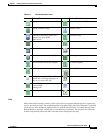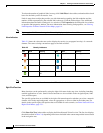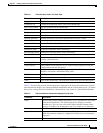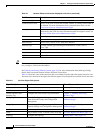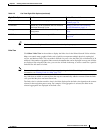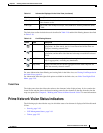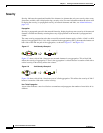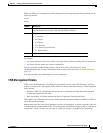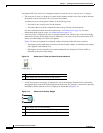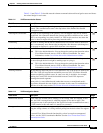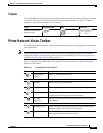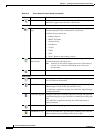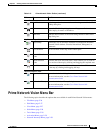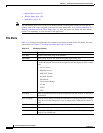
2-19
Cisco Prime Network 4.0 User Guide
OL-29343-01
Chapter 2 Working with the Prime Network Vision Client
Prime Network Vision Status Indicators
When new tickets are accumulated, a label is displayed in the navigation pane and map, based on the
following formula:
n s [+]
where:
For example:
• An object with three critical new alarms, two major alarms, and one warning alarm is labeled 3C+.
• An object with five minor new alarms is labeled 5m.
An icon represents unacknowledged tickets, and the icon color is that of the most severe,
unacknowledged ticket. For more information about severity colors and icons, see Alarm Indicators,
page 2-12.
If all relevant tickets are acknowledged, no bell is displayed.
VNE Management States
VNEs are the building blocks of the Prime Network model because each VNE maintains a real-time
model of a single device, and together, VNEs maintain a model of the entire network. VNE management
states indicate:
• Whether a VNE can communicate with the device it is modeling and with other Prime Network
components (communication state)
• How successfully a VNE has modeled the device it represents (investigation state)
This enables you to determine the accuracy of the network information and the availability of VNEs to
carry out network operations.
Management states are always local indications and are not propagated. A partial exception to this rule
is the propagation of unreachable VNEs. The management state indication applies only to VNE and its
components. A VNE can have only one state at a time (for example, Unsupported or Connecting).
Symbol Description
n The number of alarms with the highest severity that have the source as the
network element and are part of the network element ticket(s).
s The highest severity level in the new tickets:
• C = Critical
• M = Major
• m = Minor
• W = Warning
• N = Normal (cleared alarm)
• i = Informational
+ Additional, less severe tickets (optional) exist.



